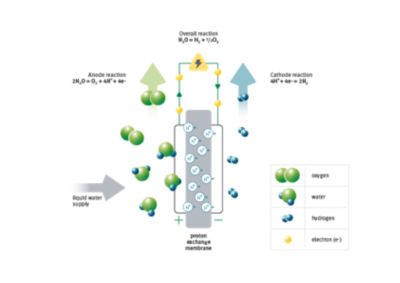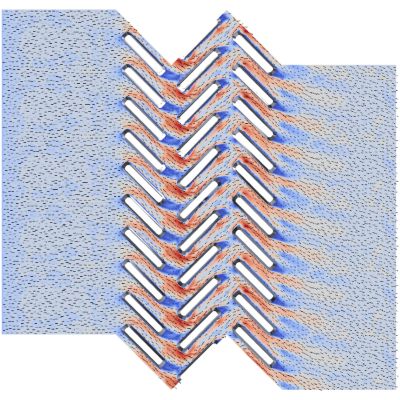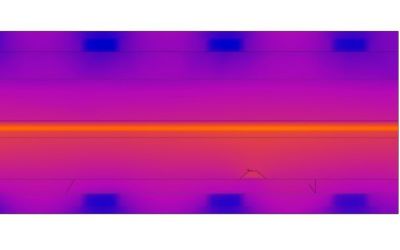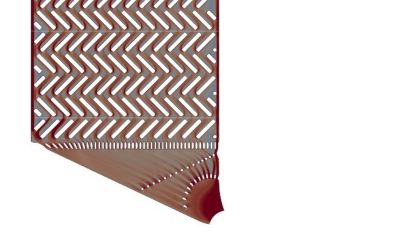-
United States -
United Kingdom -
India -
France -
Deutschland -
Italia -
日本 -
대한민국 -
中国 -
台灣
-
Ansysは、シミュレーションエンジニアリングソフトウェアを学生に無償で提供することで、未来を拓く学生たちの助けとなることを目指しています。
-
Ansysは、シミュレーションエンジニアリングソフトウェアを学生に無償で提供することで、未来を拓く学生たちの助けとなることを目指しています。
-
Ansysは、シミュレーションエンジニアリングソフトウェアを学生に無償で提供することで、未来を拓く学生たちの助けとなることを目指しています。
ANSYS BLOG
November 22, 2023
Imagining a Hydrogen-Powered Future Thanks to Simulation
Our world leaders have set ambitious goals for global decarbonization by 2050, with good reason. While the planet continues to heat up, global energy consumption is still rising, and most of this energy consumption is currently derived from fossil fuels. This bitter truth has inspired a wave of decarbonization trends in response — including green hydrogen, which is generated using renewable energy.
Why hydrogen? It’s the lightest chemical element — and the most abundant in the universe — which has the potential to make it an economical fuel of the future. Further, green hydrogen doesn’t emit CO2 when burned; it yields water, so it does not contribute to climate change. And its versatility makes hydrogen a great fossil fuel replacement for many applications, including industrial transportation, steel or concrete production, food processing, and vehicles powered by hydrogen fuel cells.
Schaeffler is looking at tech to use at both ends of the green hydrogen energy chain — hydrogen production by Proton Exchange Membrane Water Electrolysis (PEMWE) that has advantages when using renewable energy sources, and fuel cells producing electricity by hydrogen consumption. Continuously leveraging their expertise in this domain, Schaeffler develops technologies across various disciplines and divisions including PEMWE stacks and fuel cells for the automotive and power industries with the help of Ansys simulation software.
Ultimately, by combining Schaeffler’s forming competence together with Ansys’ flow optimization, superior stack hardware can be developed containing optimized bipolar plate structures to facilitate efficient hydrogen production.

“We are particularly focused on developing and enhancing the performance of our electrolyzers using Ansys simulation in the behavior prediction of our products as it relates to industrial systems,” says Pavlo Lyubarsky, Specialist, Simulation Methods Hydrogen at Schaeffler Technologies. “Simulation is a ‘digital magnifying glass’ for us, as it enables greater efficiency and delivers insights that cannot be gained from empirical assessments and experiments.”

Schaeffler K100 PEM electrolyzer stack

Schaeffler PEM electrolyzer stack portfolio
Electrolyzing Insights Lead to Sustainable Solutions
Hydrogen is extracted during electrolysis, a process that splits liquid water into hydrogen and oxygen gas by electrical current. It is used in PEM water electrolyzers, where the produced hydrogen finds its way to various mobility applications like trucks or trains, as well as in industrial applications. Hydrogen gas can also be burned for traditional heat treatment of metal, but it also finds new application as a reducing agent in the green steel production process, thus replacing coal and fossil fuels.
Schaeffler analyzes PEMWE during stack development to better understand electrolyzer performance during hydrogen production within numerical model limitations. Simplification of these models must be done very carefully to avoid poor insights and undesirable design outcomes. Properly defined simulation models and accurately set boundary conditions enable Schaeffler to assess the proposed design, evaluate the pressure drop in the PEM cell and entire stack, estimate temperature distribution, and identify hot spots. This activity reduces research and development times and operational costs, which ultimately contributes to better products.

Principle of hydrogen production by PEM electrolysis
Understanding the Electro-Chemistry of PEM Electrolysis Cell
An important focus for Schaeffler during their product analysis is understanding activity across the PEM. During PEM electrolysis, the PEM is conductive for hydrogen ions in the exchange happening between hydrogen and oxygen as water molecules are split. But, due to high pressure on either side of the membrane, some crossover does occur — where some of the water used during electrolysis and hydrogen protons recombine, hampering the separation process. It’s an inevitable part of electrolysis that leads to a hydrogen/oxygen imbalance in the final product.
Using Ansys Fluent computational fluid dynamics simulation software, the team measured the ratio of hydrogen to oxygen as a byproduct of electrolysis and if it went over a particular margin, stopped testing. This analysis is just one of the important safety parameters Schaeffler measures involving activity that is repeated on the other side of the cell membrane to determine if they have exceeded the threshold for safety.

Water flow field in a sub-section of a formed bipolar plate made in Fluent. The image shows the water velocity distribution.

Detailed thermal characteristics on a full cell scale are modeled with Fluent using a conjugated heat transfer analysis (CFD-CHT). The figure depicts the temperature distribution in a cross section through the cell and highlights the hot CCM in the middle.
Simulation Sparks More Thorough Investigation …
After an initial analysis of an electrolyzer's design, sometimes open questions remain regarding its application range. For example, the coupling of electrochemistry species as well as the multiphase aspects can require a further, deeper investigation through simulation to extend the power range of the electrolyzer.
The team used various simulation workflows with Ansys software to answer many critical questions, including how to identify the most influential parameters for hydrogen production. This assessment could then lead to further optimization around other questions such as what the thickness of the cell wall, the temperature of the feedwater, or the outflow water is. And, if there is a cooling loop, what should be the logical correlation between temperature inflow and outflow. In other words, energy efficiency is not only achieved through diligent design, but also by correct assessment of operating strategies, particularly in dynamic applications.
“We simulate factors such as the water inlet and outlet temperature that are not visible from inside the system, including any localized hotspots,” says Kay Juckelandt, Senior Specialist, Schaeffler Technologies. “We also measure all pressures, and continuously measure the purity of the water because if you have ions in the water there may be corrosion inside the stack that leads to product failures. These and other local effects we cannot normally measure but can be observed using simulation. That is one benefit that we previously could not realize, or only realize with really high efforts.”

The image shows the feed water flow field of a formed bipolar plate. Optimization studies of flow structures are carried out with Fluent’s adjoint solver to improve the hydraulic design.
To Inform and Be Informed with Ansys
The Schaeffler team has a great deal of appreciation for the support they receive from Ansys. This support was particularly valuable on the CFD side of things for improving post-processing, where critical development time was saved through a better understanding of service functionality and user interfaces.
“What I really like about Ansys simulation software is that the range of physics that you can cover with Ansys products is enormous,” says Lyubarsky. “We are able to build an integrated tool chain here that helps us to be efficient in providing guidelines to our designers and deliver outcomes to improve the product. The Ansys product range basically covers everything we need with sufficient accuracy and efficiency that leads to streamlined analysis that customers benefit from.”










